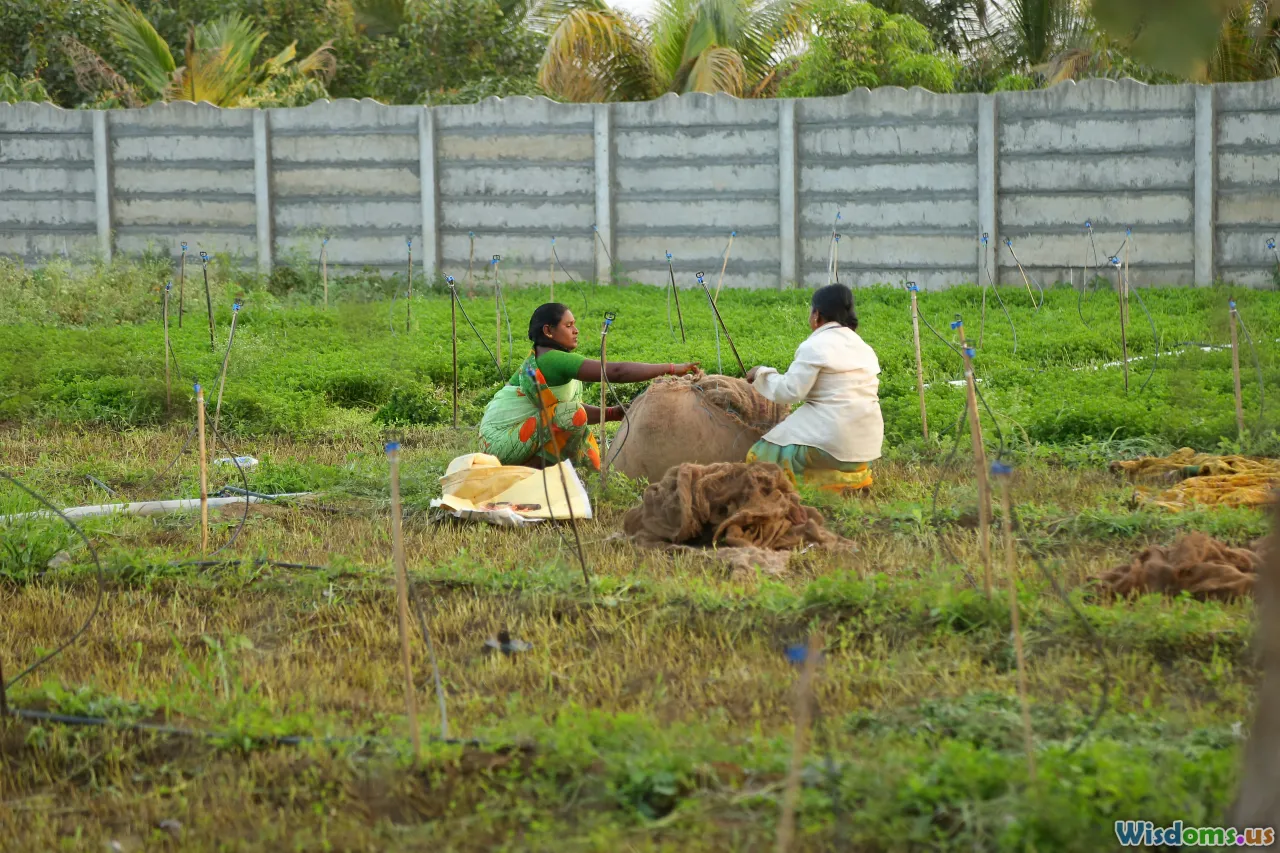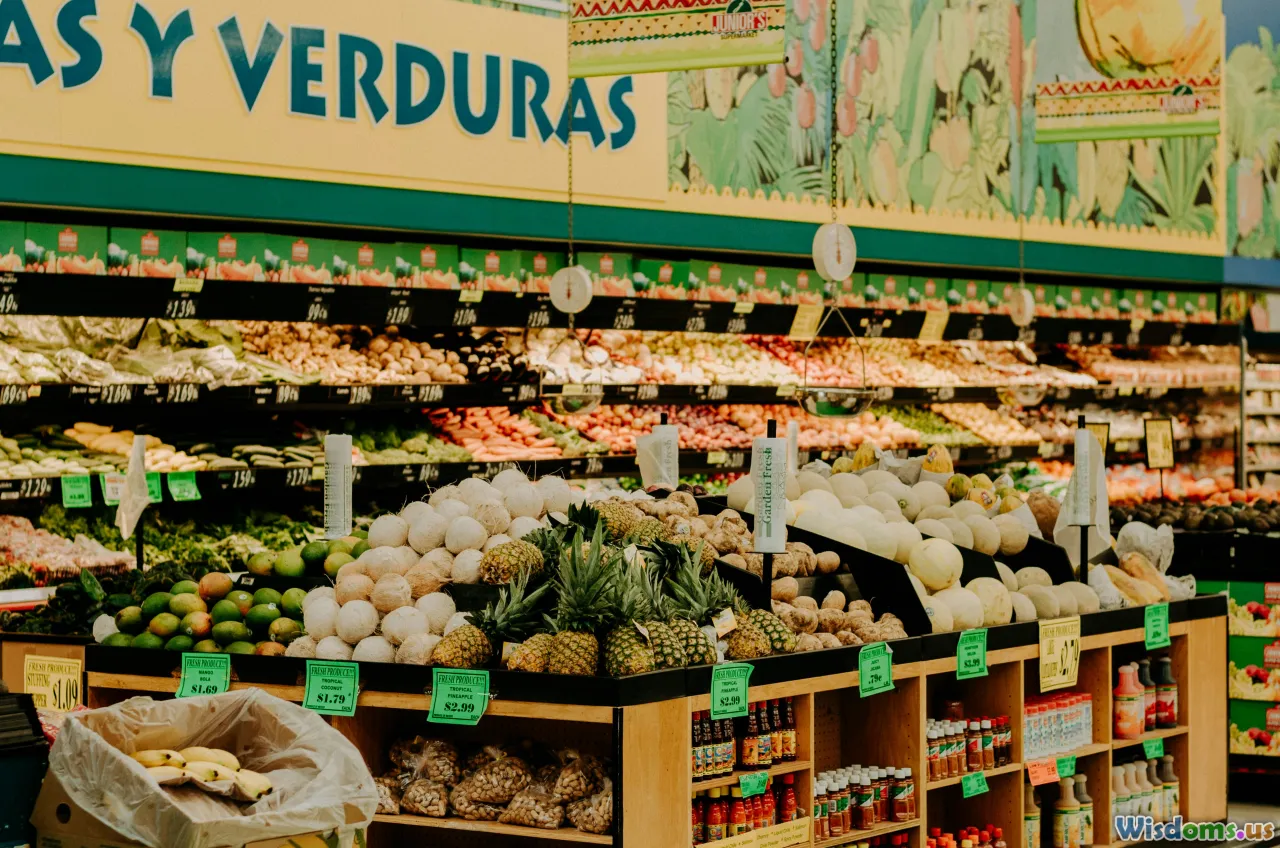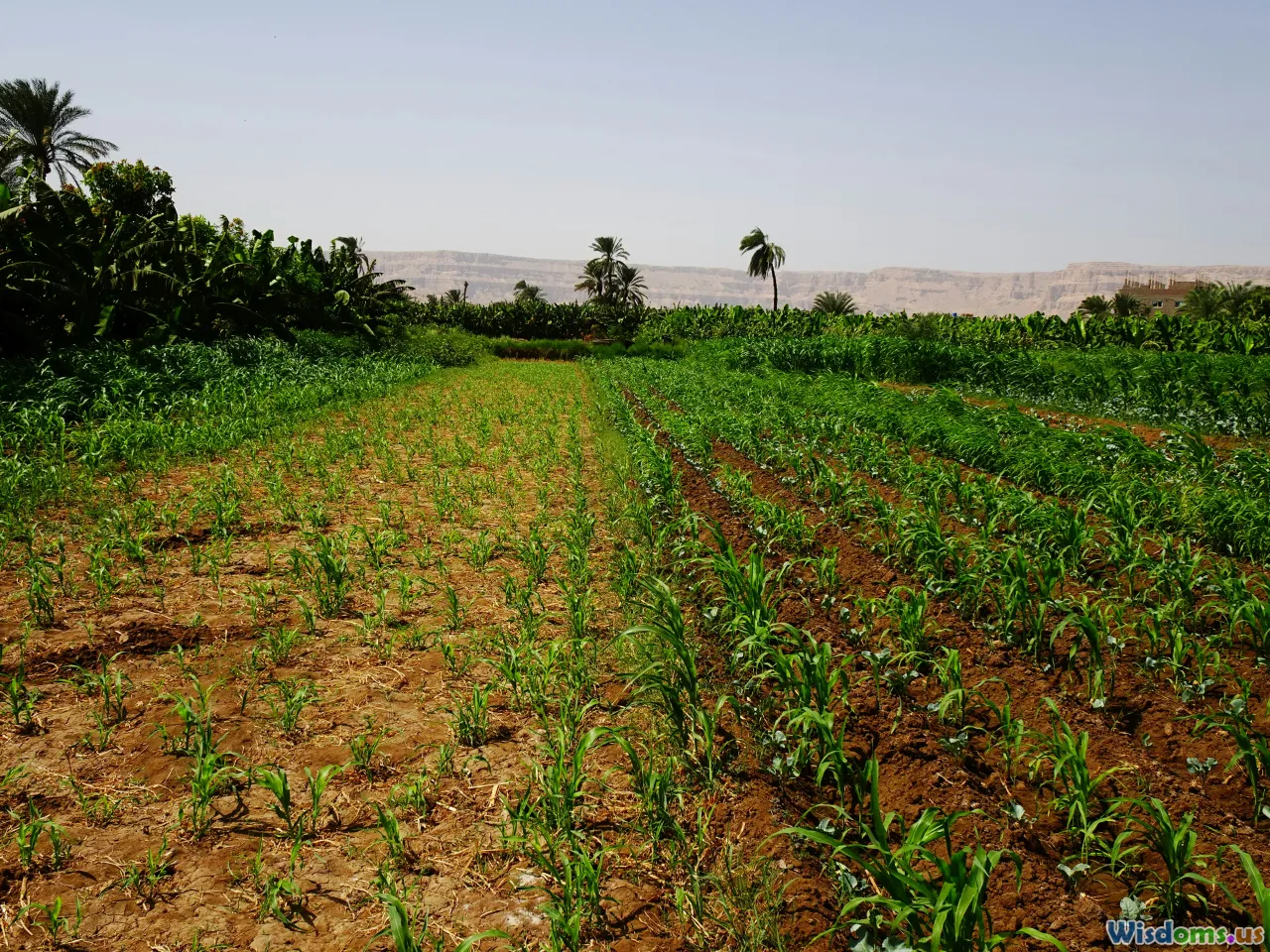
Comparing Food Security Projects: Rural Africa versus Urban India
15 min read A detailed comparison of food security initiatives in rural Africa and urban India, highlighting strategies, challenges, and outcomes. (0 Reviews)
Comparing Food Security Projects: Rural Africa Versus Urban India
Food security remains one of the most critical global challenges of our time. The patchwork of efforts spanning continents presents diverse stories, strategies, failures, and successes shaped by unique local realities. When comparing food security projects in rural Africa and urban India—even at a glance—their contrasting landscapes reveal much about the complexities and dynamism underpinning hunger alleviation efforts. This article delves into how these two settings approach food security, weighing what works, where challenges persist, and what global practitioners can learn from both.
Understanding the Contexts

While hunger and malnutrition may look similar on paper, the contexts driving insecurity in rural Africa and urban India are strikingly different.
Rural Africa—typically marked by vast farmland, high dependence on rain-fed agriculture, and scattered populations—struggles with logistical hurdles in delivering aid and fostering resilient agriculture. Take, for example, northern Burkina Faso: here, poor soil fertility and unreliable rainfall have kept many communities under chronic threat of food insecurity, with nearly two-thirds of families relying on subsistence agriculture.
Urban India, in stark contrast, sees millions packed into sprawling neighborhoods where infrastructure may lag behind need. Informal settlements, or slums, like Mumbai’s Dharavi, house dense populations where most do not farm but depend on tenuous daily-wage jobs. Market access abounds, but financial access to good food is often the true limiting factor. While food is technically available, nutritional intake is impaired by poverty, urban unemployment, food price inflation, and social marginalization.
Appreciating these unique starting points is foundational when comparing food interventions and evaluating impact.
Core Approaches: Agriculture Versus Systems

Rural Africa: Rooted in Agriculture
Here, most projects focus on increasing local agricultural productivity and resilience. Organizations like the Alliance for a Green Revolution in Africa (AGRA) support the dissemination of drought-resistant seeds, promotion of micro-irrigation techniques, and establishment of farmer cooperatives. In Ethiopia’s Tigray region, the REST (Relief Society of Tigray) introduced area enclosures, community-based natural resource management, and women’s farming cooperatives—raising food availability and economic independence simultaneously.
Moreover, integrated programs are crucial in regions touched by conflict or climate crises. Malawi’s "Farm Input Subsidy Program" provided vouchers for seeds and fertilizer to millions of smallholders, raising maize yields and directly reducing household food gaps.
Urban India: Systems and Entitlements
Urban food security projects, meanwhile, emphasize systems that facilitate fair, consistent, and affordable food access. The backbone here is the Public Distribution System (PDS), one of the world’s largest social safety nets, distributing subsidized grains across cities and towns to over 800 million Indians. Yet, leakages and inefficiency have hampered impact, leading cities like Chennai and Delhi to introduce digital ration cards, SMS-based tracking, and biometric authentication.
Non-governmental actors, such as "Feeding India," bridge the gap by rescuing surplus food from restaurants and distributing it in slums, addressing both food waste and hunger. Urban school meal programs (Midday Meal Scheme) have improved nutritional intake among children, reducing the sharp socioeconomic divide.
Challenges Unique to Each Setting

Rural Africa
- Climate Volatility: Recurrent droughts or floods alter harvests, threaten livelihoods, and keep communities in a cyclical food crisis.
- Weak Infrastructure: Poor road networks and scant storage lead to high post-harvest losses. For example, nearly 30% of staple crops in Sub-Saharan Africa perish due to lack of storage or market access.
- Gender Inequity: Women, responsible for most food production, face limited land rights and access to credit or technology. The lack of decision-making power undermines household food security outputs.
Urban India
- Informal Employment: Urban livelihoods can be disrupted overnight (as seen during COVID-19 lockdowns), quickly cutting off families from food access even as markets are well supplied.
- Migration and Documentation: Internal migrants often reside in legal limbo, missing out on food schemes tied to ration cards and permanent addresses.
- Double Burden of Malnutrition: Alongside instances of undernutrition, Indian cities suffer rising obesity rates—junk food’s availability and affordability can outstrip healthy options, creating complex nutritional challenges.
Success Stories and Learning Curves

Rural Africa: Evidence of Progress
In Niger, the "3N Initiative" or "Nigeriens Nourishing Nigeriens" takes a multi-pronged approach: supporting family farming, women’s access to land, and local food processing while promoting weather-indexed crop insurance and community-managed grain banks. These programs offer both a safety net and a step towards long-term resilience, reducing reliance on food imports.
Kenya’s "Shamba Shape Up"—a reality TV show—brings agricultural science into villages, reaching millions with tips on composting, seed selection, poultry care, and pest management. Real-time uptake of ideas into farm practice demonstrates the power of information dissemination.
Urban India: Technology and Policy Innovation
Mumbai’s "Dabbawala System," while not a direct food security project, is a globally cited case of how low-tech distribution can achieve near-perfect efficiency in meal delivery, feeding hundreds of thousands of workers every day at low cost. NGOs collaborating with dabbawalas during school closures distribute extra lunches to poor neighborhoods.
Bengaluru, known as India’s "Silicon Valley," has seen startups like "DailyNinja" and "BigBasket" piloting doorstep, fresh food delivery for low-income neighborhoods, ensuring stable access during emergencies. Digital payment platforms facilitate food purchasing for the urban poor who lack standard bank accounts.
Community Engagement: The Heart of Sustainability

True success—whether in the African countryside or India’s city blocs—depends on embracing and empowering local actors.
In Ghana, the "Farmer-Based Organization" (FBO) model grounds programs in community dialogue, farmer-led research, and peer-to-peer training. Such networks enable knowledge sharing about climate-smart agriculture, pest management, and negotiating better market prices. These self-reinforcing systems outperform top-down state-run extensions for sustainability.
Indian cities benefit from women's Self-Help Groups (SHGs), formed to access microcredit, pool risk, and scale up kitchen gardens—reclaiming rooftops and barren plots to grow vegetables. Groups in Pune, for instance, collaboratively manage waste composting and localized food production right within their residential complexes. Stronger local organizations also advocate for entitlements and improved policy design.
Climate Change: A Growing Threat

Both regions face mounting threats from climate shifts. Sub-Saharan Africa is predicted to see a 10–20% drop in cereal yields by 2050 due to higher temperatures and changing rainfall patterns (Intergovernmental Panel on Climate Change). Programs like Climate-Smart Villages in East Africa trial alternative crops, drought-tolerant varieties, rainwater harvesting, and risk-sharing insurance—essential tactics as traditional approaches become untenable.
Urban India faces a different, yet equally urgent, climate dilemma: heatwaves and flash floods jeopardize both supply chains and earnings for daily laborers. Urban rooftop gardening initiatives and rainwater harvesting interventions serve both adaptive and food security purposes. Authorities in Chennai now incorporate urban farming into broader city resilience policy, seeing food not just as product, but as part of a climate-adaptive infrastructure.
Nutrition, Not Just Calories: Evolving Project Goals

Grippling with hunger alone is no longer enough—both realms now aspire to improve nutrition quality, not just caloric sufficiency.
In Uganda, "Orange Fleshed Sweet Potato" projects enrich staple diets with vitamin A, reducing childhood blindness. School gardens in Nigeria supplement student meals and teach lifelong eating habits, making nutrition a daily lesson.
India’s Anganwadi centers (government-run childcare centers) focus on holistic nutrition in the urban poor districts. Here, mothers receive counseling on breastfeeding, child diet, and hygiene, reducing stunting and wasting rates.
Partnerships with local communities for culturally appropriate nutrition are vital: where fish or dairy consumption is taboo, alternatives for micronutrient intake are vitalized. Organizations like Akshaya Patra Foundation scale up kitchen-based models to offer freshly prepared, balanced meals to millions of children daily, demonstrating public-private partnerships’ power.
Data and Technology: The Game Changers

Mobile technology bridges vast distances and data gaps in both continents. In rural Zambia, "Virtual Farmer Extension Officers" use simple text or call services to diagnose pest issues and recommend crop remedies instantly—saving potentially devastated harvests. Crowdsourced GIS mapping helps delivery trucks navigate rural roads, minimizing spoilage.
In Indian metros, initiatives like Aadhaar (digital biometric ID) have enabled millions to access food subsidies seamlessly, curtailing fraud. Startups build supply-chain tracking apps connecting small grocery vendors and consumers directly, making food pricing transparent and competitive.
These solutions, though nuanced by literacy and technological readiness, hint at a future where digital connectivity becomes a core weapon in the fight against hunger wherever geography dictates.
Policy Recommendations: Toward Synergies

Despite unique challenges, shared learnings hint at promising policy actions:
- Strengthen Safety Nets Across Mobility: Both settings benefit from policies that de-link food aid and subsidies from fixed addresses, ensuring security for migrants and those in flux.
- Empower Women and Youth: Targeted support improves outcomes, as seen with SHGs and women’s cooperatives in both rural and urban contexts.
- Invest in Last-Mile Delivery: Improved infrastructure, local warehousing, and data-powered logistics slash inefficiencies and post-harvest loss.
- Integrate Nutrition Education: Layer nutritional counseling with food access to combat both under- and over-nutrition.
- Foster Innovations in Urban Agriculture: Cities everywhere hold potential for food production via rooftop, vertical, or community gardens.
Cross-country collaborations, like India’s farmer-to-farmer training exchange with East Africa, demonstrate that adaptable practices transcend boundaries when knowledge circulates openly.
Charting the Path Forward

No single blueprint defines good food security programming. Still, whether under acacia-shaded rural cooperatives in Africa or beset by the frenetic energy of Indian alleys, the end goal is the same: every person, regardless of geography or income, deserves the dignity of consistent, safe, and nourishing food. Lessons from both terrains remind us that addressing hunger requires equal attention to the specifics of place and the universality of our needs—empathy, innovation, and the persistent pursuit of better ways forward.
Rate the Post
User Reviews
Popular Posts
















